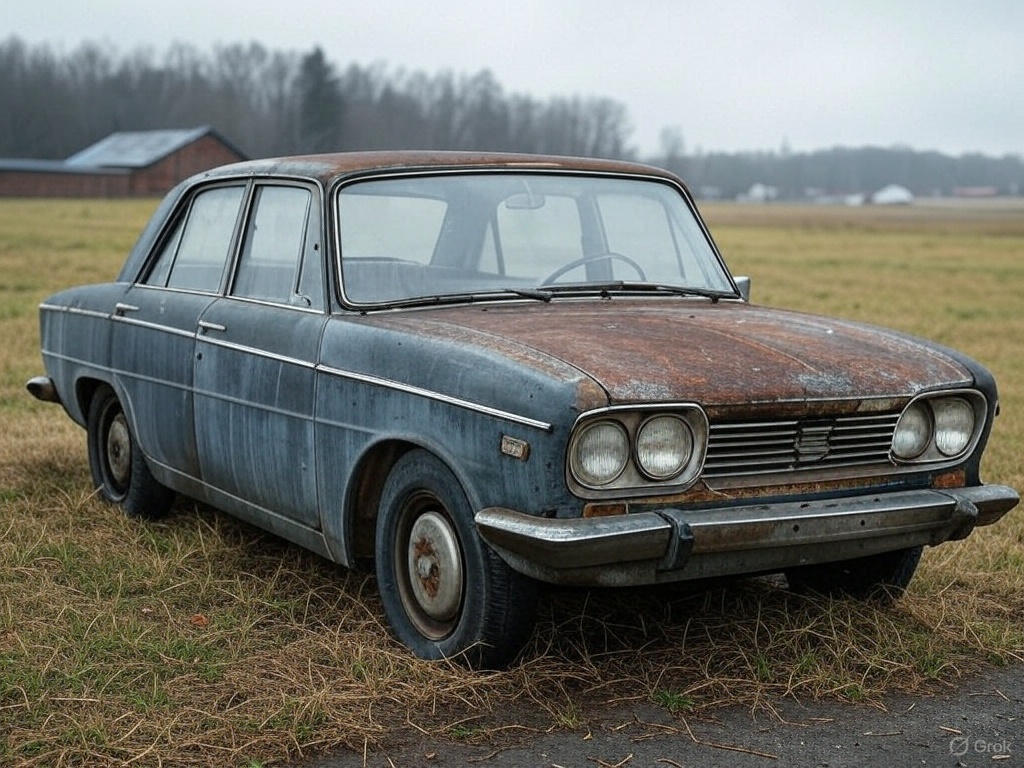Driving A 28-Year-Old Beater Made Me Love My Car Again

While visiting my parents in Honolulu this past winter, I ended up driving my dad’s 28-year-old beater for eight days. He bought that Toyota Avalon new in 1997—back when I was a college sophomore and he was stationed in Guangzhou, China for the U.S. Foreign Service.
I’ve known this car nearly as long as he has, and for more than half my life, I’ve driven it during my visits home. Sure, it drives like a boat and shakes when I hit the brakes on the highway, but it reliably gets my family around the island.
Not Getting a New Car After 10 Years After All
I once planned for summer 2025 to be the year I’d finally upgrade my ride. I always believed the ideal time to replace your car is when it hits about 10 years old—long enough for safety and technology improvements to kick in, which is crucial when you’re transporting your family.
Yet, after spending time behind the wheel of my dad’s old Toyota in Hawaii, I returned to my own car in San Francisco feeling like I was driving a brand-new luxury automobile!
My current car—a 2015 Range Rover Sport HSE that I bought in December 2016, just before my son was born—feels amazing by comparison. It handles smoothly, the steering is tight, and there’s no annoying shake when I brake.
The Range has Bluetooth for tunes, a backup camera that beeps when something gets too close, and even twice the horsepower of my previous ride. The paint is still shiny, and the tires boast about 80% tread remaining. There’s even leather seats, which are starting to smell amazing again given its age.
If my dad’s car could last 28 years, I’m confident my Range will easily last at least another five years, for 15 years total.

New Cars Are Just Way Too Expensive
I’ve looked at several new luxury vehicles comparable to my Range Rover, and every one of them costs between $115,000 and $170,000. Maybe I’m a bit nostalgic, but today’s new luxury car prices seem utterly absurd compared to the $60,000 I paid after tax. Even though I’ve been diligently saving and investing in a new car fund for nine years, the thought of shelling out six figures after taxes for a new vehicle feels completely off.
So, the logical alternative is to stick with what I have. I’ve also considered more budget-friendly options, like the fully loaded Honda Civic for about $28,000, but it’s too small for our family road trips and lacks features like four-wheel drive—meaning I’d have to tack on chains in snowy conditions on our way to Lake Tahoe. No thank you.
The next option I looked at was the new Honda CR-V, which runs about $42,000 fully loaded (roughly $46,500 after tax). While that might be acceptable for someone without a car, I already have a perfectly fine family car. And to be frank, it feels like a steep downgrade, when I’d like to enjoy nicer things in my older age.

Used And New Car Prices Should Continue To Come Down
Another factor I’m considering is the gradual decline in average used car prices, especially with the possibility of a recession ahead. Luxury car prices are likely to take a hit as more owners sell off unnecessary vehicles. At the same time, new car prices may see more discounts as inventory continues to rise.
Below is a great chart from the St. Louis Fed showing how used and new car prices peaked in 2022 and have been trending downward since, with inventory steadily increasing. Therefore, I expect consumers can get better car deals between 2026 – 2027.

Recently Spent a Bundle on Car Maintenance
Over the past two years, I’ve invested roughly $5,400 in maintaining my Range Rover, which has around 61,000 miles on it. Here’s a quick rundown:
- New battery: $500 (2024)
- Two new 22-inch tires: $825 (2024)
- Water pump: $1,250 (July 2023)
- Vacuum pump and PCV valve: $1,050 (2024)
- Oil change service: ($199, January 2025)
- Brakes and rotors ($1,600, Jan 2025)
- Heater manifold + a couple hoses: ($1,135, March 25, 2025)
Fortunately, my mechanic is just a one-mile walk from my house, so dropping off the car for maintenance is never a hassle. After $5,734 in repairs and upkeep so far, the idea of selling my car to buy a brand-new one just doesn’t make sense.
If I were to get rid of my car, I should have done it before reaching 50,000 miles and before these expenses began to pile up. Now that I’ve had these repairs done, I expect my Range to be in great shape for another 5-10 years or 60,000 miles.

The Joy of Driving a Well-Worn Car
After nine years of driving my 10-year-old car, I’ve grown accustomed to its quirks—much like my father’s steadfast 1997 Toyota Avalon. Every time I head to the supermarket, I feel no stress about door dings. In fact, when a new ding appears, I just see it as another character mark on a car that’s been a reliable part of my life.
I also love that as the car ages, it draws less attention. I bought my Range because I loved its look and performance—ever since I was a middle-school kid in Malaysia, I’ve been a fan of Range Rovers. And attracting attention isn’t my goal, which is why I appreciate the tinted windows.
Finally, if my old car can last another seven years, it’ll be perfect for teaching my son how to drive. Hopefully, he won’t crash it—but if he does, its larger size should provide some extra protection. Plus, by then, it won’t be much of a financial loss either.
Hmm, now that we’re talking about safety, maybe upgrading to a safer car sooner isn’t a bad idea. At the very least, I should wait one to three years for used prices to drop as the economy slows. When the time is right, I might splurge on the best car I can afford while my kids are still living with us.

Final Reflection: Keep Your Old Car For Longer
Driving my dad’s old beater made me realize that sometimes the best decision is to stick with what works. Instead of spending a ridiculous sum on a brand-new car that may not drive any better, I’ll save and invest my money. My RR Sport has served me well and still has plenty of life left in it, and that reliability is worth more than chasing the latest model.
In a world where new cars are prohibitively expensive and constant upgrades may be more about status than functionality, holding on to a well-maintained vehicle is a smart, financially savvy move. Let a car’s depreciation work for you by getting your House-To-Car Ratio as high as possible, if you want to achieve financial independence sooner.
Although I will say, car shopping is one of the most fun things I’ve enjoyed as a kid and adult, mainly due to the test driving. That could be a fun father son, father daughter bonding experience in the future. However, I’m hoping by the time my kids are able to drive, they won’t due to safer, self-driving cars.

Subscribe To Financial Samurai
If you want to become a millionaire, grab a copy of my new book, Millionaire Milestones: Simple Steps to Seven Figures. I’ve distilled everything I’ve learned over the past 30 years of working and writing about finance to help you build more wealth than 90% of the population. The more money you have, the more freedom you’ll have to live life on your terms. You can purchase a copy on Amazon or wherever you buy books.

Listen and subscribe to The Financial Samurai podcast on Apple or Spotify. I interview experts in their respective fields and discuss some of the most interesting topics on this site. Your shares, ratings, and reviews are appreciated.
To expedite your journey to financial freedom, join over 60,000 others and subscribe to the free Financial Samurai newsletter. Financial Samurai is among the largest independently-owned personal finance websites, established in 2009. Everything is written based on firsthand experience and expertise.




